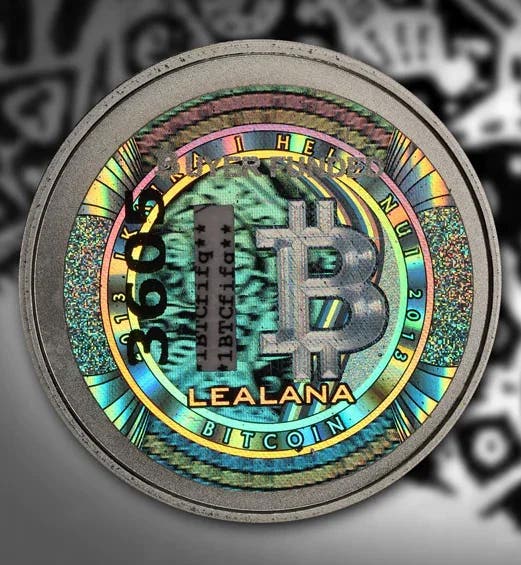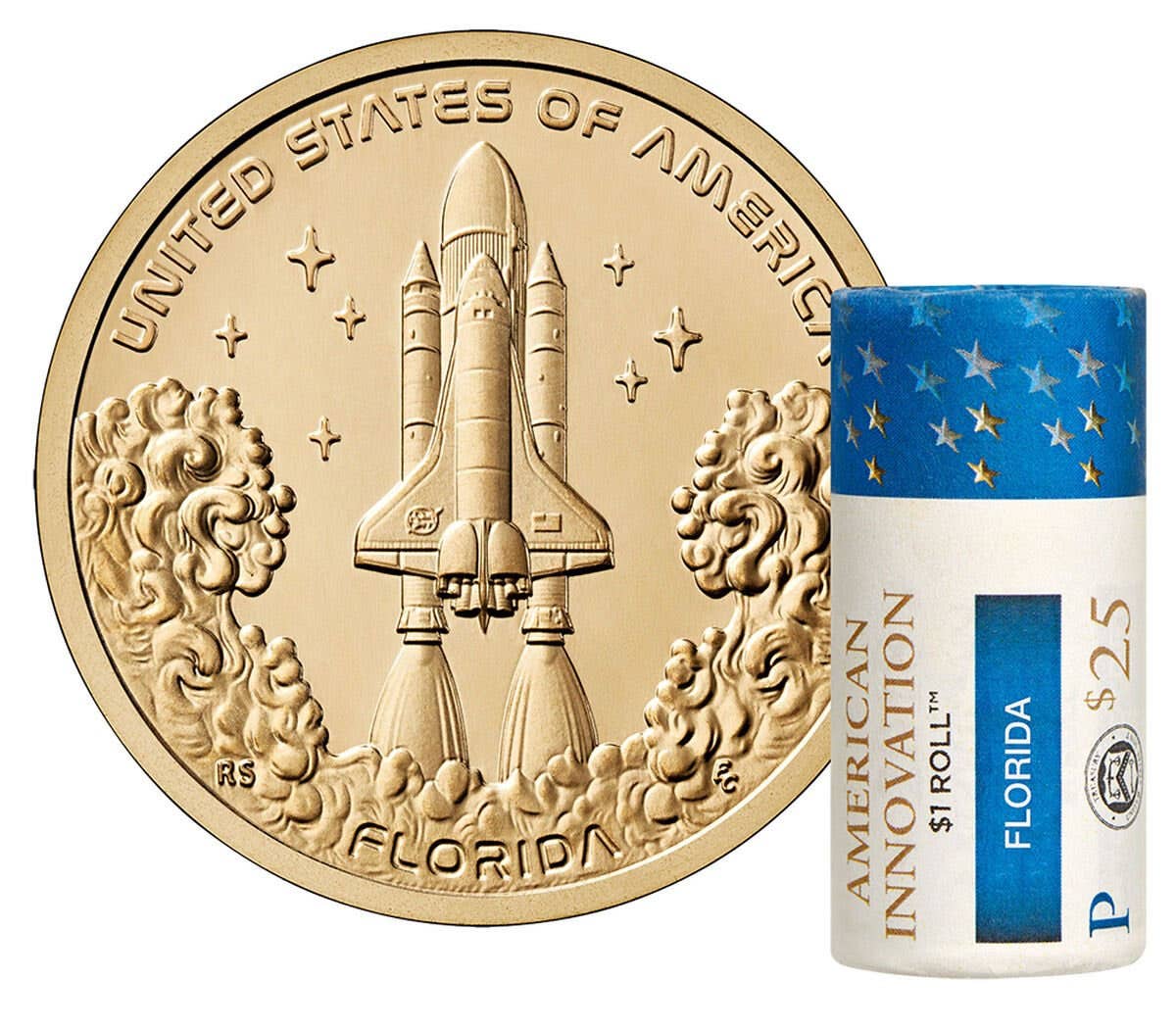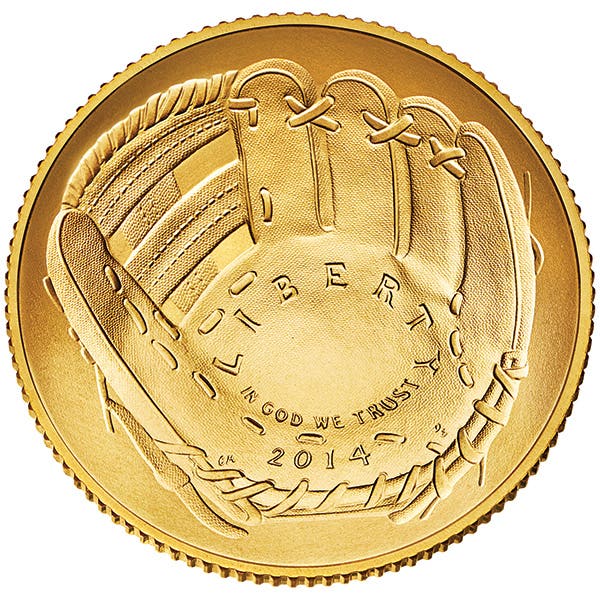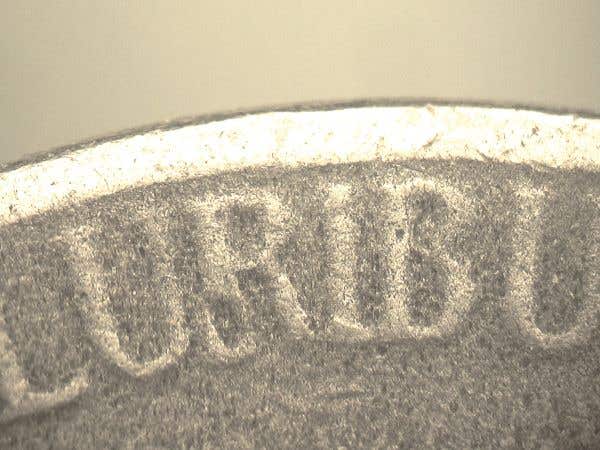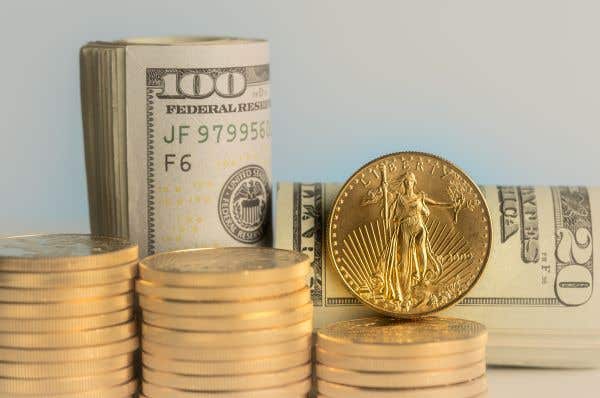Community Voice Responses (12/13/2011)
From the Nov. 18 Numismatic News E-Newsletter: Grading service slabs have been used for 25 years. Are they a good thing? Here are some answers sent from our e-newsletter readers to Editor, Dave Harper.
From the Nov. 18 Numismatic News E-Newsletter: Grading service slabs have been used for 25 years. Are they a good thing? Here are some answers sent from our e-newsletter readers to Editor, Dave Harper.
I’m a longtime U.S. coin dealer and I have to admit that ever since I started buying and selling rare coins, the existence of the multiple grading services of the time helped create both more accurate grading for collectors and dealers alike and many more grading tiers that were badly needed long before Professional Coin Grading Service and Numismatic Guaranty Corporation began. This third- party process greatly increased confidence while boosting grading standards, and certainly helped everyone with the built-in authentication of genuine versus counterfeit, again saving buyers and sellers from making serious mistakes when transacting business.
The holders of the various services also have and continue to protect the millions of valuable coins that have been third-party graded. No more risk of dropping a rare and valuable coin, much less risk of further chemical changes on the coins, far less spit and finger oils getting on and damaging the coins, etc.
I can remember the many thousands of satisfied customers over the years who were impressed with the many attractive coins that were already graded and in a hard plastic holder. Virtually all of us in this great hobby realize that we aren’t perfect when grading raw coins, can and do often misgrade raw coins accidentally and are very relieved that we don’t have to always make or give the final official grade for a coin.
Obviously, highly attractive coins will always trade hands, whether raw or especially if third-party graded (though it helps if they’re in an ever popular, NGC or PCGS holder). Likewise, coins not so attractive may languish and not trade hands very often, even if third-party graded. That’s my two cents’ worth on this great modern hobby invention and tool.
Lee Stern Laguna Hills, Calif.
The question is whether grading services are a good thing or not. Unfortunately, there is a yes and a no answer for this question. Yes, I believe that grading services are good for the industry when it comes to ensuring proper grade and (most importantly) authentication. All collectors want to make sure that their collection is indeed true and real.
There is also a no to this question because of all of the gimmicks out there like “First Strike” or stating that the Silver Eagle came from the San Francisco Mint even though it doesn’t have the “S” mintmark. Gimmicks like these are used to ensure that the unsuspecting buyer is charged higher prices for something that is basically a common item in the marketplace.
Additionally, there are too many grading services out there for one to choose from. Knowing which one is best can come from talking to other collectors and from local dealers who you can trust.
Mike Buchala Hillsborough, N.J.
I don’t think slabs are necessarily good. I liked the old photo grading system better.
Bruce Bouma Jamestown, N.Y.
I am a certified numismatic appraiser with the American Society of Appraisers for 26 years and a collector for 40 years. I have handled tens of thousands of coins over the years and I can tell you that in my experience, all slabs are worthless if the grade is not right. So many collectors do not want to do their homework and take courses, read, or educate themselves in proper grading methods. Instead, they rely on a piece of plastic to do this for them.
In handling many collections for liquidation, I constantly see garbage in plastic, where all of the grading services have their nightmare numbers.
As an appraiser, I have to evaluate the coin, not the slab, and I, like all other dealers will not buy a MS-63 coin for MS-65 price because the slab says so. Slabbing for dealers has been a necessary evil for us over the last 20 or so years, so that we can market, sell or auction our stock. I took my first grading course in 1986, bought a number of grading guides over the years, compared and asked questions of others to refine my knowledge and expertise.
When I read the crying letters in journals from miserable, unwary buyers, I can only wonder if they invest their other savings in products they know nothing about. It seems fairly obvious to me that until a machine can scan, feel, discern originality, and recognize eye-appeal on a coin, that we’re going to continue to have plenty of worthless slabs.
Alvin L. Stern Houston, Texas
I think slabs have ruined the general hobby. It’s allowed dealers who really don’t know anything to just trust the grading. In my experience, these types of dealers won’t, or rarely, touch an unslabbed coin, saying “bring it back when it’s been slabbed.” I would never trust a dealer who can’t grade coins.
The hobbyist is also at fault for blindly trusting the third-party grading.
Rick Welton Hobart, Ind.
I hate them. I am old school and rarely if ever see a slabbed coin that I agree with the grade. Are those people blind or can’t they read each grade as described in most coin books?
I never have purchased a slab and I doubt that I ever will. Why pay the freight for some overcooked coin? They are not graded, they are certified. If I bought a 1913 Liberty nickel I might go for the slab. I could go on forever, but I think you know where I’m coming from.
T. Evans Knoxville, Tenn.
Unfortunately, the grading firms have manipulated the hobby by turning it into a stock market. What is the first thing all collectors espouse to the new collector “buy the book before you buy the coin.”
Now most people won’t look at a coin if it isn’t graded and to add more injury to insult, it better be from a reputable grading firm. And just like the stock market, it involves questionable bundling of securities and marketing them. Now we have another level of grading to ensure the grade given initially is correct.
It is no wonder our hobby is losing members and the next generation has no interest in collecting.
James M. Adams Pasadena, Md.
I have just returned to coins after about a 50-year absence. With retirement coming up quick, I thought I needed something else to do.
After looking at and buying some slabbed coins, my feeling is about the same as seeing animals graded at county and state fairs: just one man’s opinion. Because two or three grading services have been around longer than the others, I don’t feel they are far superior. Also, the great price difference between Mint State grades is out of line.
Coming from a retail business, I know that proper advertising along with showmanship will soon part a buyer from his money. Before purchasing a hyped-up coin, the buyer should take his or her own close look.
Peter Kiefer Stevens Point, Wis.
The grading services provide a great service encapsulating coins. The encapsulated coin can be handled without fear of damaging the coin as the holder provides great protection.
Mostly, the grading services do a very good job grading the coins, but I have noticed that when major dealers send in coins by an amount exceeding 25 of one date, the grading services have a tendency to not grade them as closely as they would if only three or four of the same date was sent.
For example, I recently purchased from a major dealer (one who sends in hundreds of coins to be graded) and the coin, a 1978-S Jefferson nickel, was graded by a firm as Proof-69 DC but the coin has a medium-sized gouge on the obverse and a scratch on the reverse. There is no way that the grader should have given it that type of grade; at best I believe it to be a Proof-67.
I emailed the dealer about it and that he should check his coins more closely, but I also advised him that it was not cost effective to mail it back to him and that I would just keep it as a teaching tool at coin club meetings to instruct collectors to be sure that they only buy encapsulated coins that they can physically pick up and examine with a glass to ensure that they are getting a coin that matches what the grading service states.
All said, there is a very important place for grading services, but they must constantly improve their quality control and never slack off. If they do, then they will began to lose credibility with collectors.
Jim Worley Lakewood, Wash.
In response to your query about grading slabs, I offer the following.
Once upon a time, there was a campaign to establish a service which would authenticate coins for collectors. At the time, there was rampant counterfeiting going on in the Far East, and many American collectors were being taken in not only by these unscrupulous individuals, but also by their allies: both knowing dealers and unknowing collectors who couldn’t tell the difference between genuine and fake. After a lengthy struggle, ANACS was formed to perform this service.
Today, we again have a flood of counterfeits coming from the Far East, especially China. These pieces are much harder to detect and identify than those of earlier times. We again need an available service for authentication; preferably, one not associated with individual dealers, but serving the hobby as a whole.
Unfortunately, this rather simple process was hijacked by those who saw an opportunity to turn a buck by offering slabs which purport to grade the associated coin. In turn, the grading process has been complicated by being subdivided well beyond what’s reasonable.
I recall an instance where I was asked to evaluate three 1932-D quarters; I graded them as two MS-63s and one MS-65. I was not comfortable with subdividing the pieces, but that seemed appropriate in the circumstance. The owner subsequently offered the pieces to several dealers for their evaluation, and possible sale offer.
The result was generally the same as I had provided, but in the case of each dealer, the identity of the MS-65 permuted; after three dealers and myself, each one of the three quarters had been evaluated as the MS-65. As you might imagine, this has left me with little confidence in the grading process as carried out by the slabbers.
Much of my collection consists of hammered coins. These are clearly graded subjectively, as there are too many variables between pieces to make rote grading possible.
Personally, I would like to see us go back to the situation which existed shortly after the formation of ANACS, and to bid adieu to the grading function.
Jack Lloyd Address withheld
Slabbing coins is a good thing to a point; but they do not do everything to ensure worthiness for your coins. In fact, I would say that they do more harm than good.
Having your valuable, preserved and graded coin in a hard-plastic coin slab can be a nice thing in the sense that your coin is well protected and brilliantly manifested with its identification, professional grade and the assurance that your coin is authentic, particularly if it is a very valuable coin. And you can display your slabbed coin to yourself and others with flying confidence, like a prized artwork and a certified treasure. For that matter, your slabbed coin only needs minimal protection from the elements. And if you need to sell your slabbed coin because it was meant to be an investment from the beginning, or because you are in need of extra money, a slabbed coin may make it easier and faster to sell, compared to an unslabbed coin.
However, they can pose a problem for collectors like me, who do not collect only extremely valuable coins. Having a few slabbed coins and many unslabbed coins made me want to slab either more or all of my coins, so that all my coins would be wearing the same uniform, costing more money.
In this sense, having a few slabbed coins had a negative psychological effect on me. It made me feel that my unslabbed coins were no longer important for my collection, which was not the case; but it surely looked and felt like it.
Also, having many slabbed coins posed problems for storage space because slabs are thick and rather heavy. Also, though many slabbed coins are very stackable, I had trouble viewing them because there are only few albums, designed for slabbed coins, which are very expensive and take up space, and I would end up having to view one slabbed coin at a time. That is something I did not want to always do because it is also fun to view many coins at once, so they can bring me the ongoing sense of satisfaction of having a wonderful coin collection. There is another negative psychological effect on having slabbed coins in my experience. Having slabbed coins from grading services made me feel overly dependent on grading services in the sense that the grading services would always dictate the value and worthiness of my coins.
So, I learned to dislike coins in slabs and in the end, I broke all my coins out of their slabs, and put all my coins in Mylar flips and heat-sealed them. In the sealed Mylar flips, coins are easy to store, easy to view many at once, and they still need only minimal protection from the elements. Also, in the sealed Mylar flips, I can view an individual coin through a rather thin film rather than through a thick window. Putting years of experience of coin collecting and selling under my belt, I can now ascertain whether or not a coin is authentic. Also, if I have to sell a coin, I have found in my experiences that having an slabbed coin or an unslabbed coin hardly makes a difference to experienced dealers.
Therefore, I give a thumbs down to slabbing coins.
Adam Baig Chicago, Ill.
There are various positives and negatives about the grading services.
Positive:
- Relatively reliable places to use to verify authenticity;
- About 75 percent positive at detecting artificial toning, tooling, altered surfaces and the like;
- The holders protect the coins better than most of the former holders;
- Somewhat more consistency in grading, but not as consistent as the novice collectors or general public perceives;
- I like how NGC grades some ancients where they also evaluate the planchets and the strikes;
- Makes it more difficult for a marketer to try to sell the coins at prices applicable to higher grade specimens;
Negative:
- Those who are determined to sell coins described at a higher grade can just create their own grading service to appear to offer the retail customer more value/protection than is actually the case;
-The multiple submission of coins that are tweeners until they finally hit the higher grade;
- Does not overcome the fact that grades infinitely divisible, so that two coins might both say MS-64 on the holder, but one would more accurately grade 64.113358 and the other 64.113377. You also still have the problem of some collectors who want bright white coins, even if dipped, versus those who prefer original surfaces that may not be white looking at coins that may have the identical grade. Each would consider the coin with the feature they prefer to be a more valuable coin.
Perceived changes in certification standards over time:
- Willingness of grading services to certify NCLT coinage and other coins of negligible value, which are then marketed at prices far above what the coins will be worth on a long term basis
Growing problem with counterfeit slabs
Takes up more storage space for the same quantity of coins
Patrick A. Heller Lansing, Mich.
Yes and no. Slabs are wonderful in that they will protect your valued coin in obvious ways for future enjoyment and investment. You also don’t have to guess at what you have and what grade it really is (although the grade may still be subjective to a small degree). The downside is that you have to be sure you actually have a slabbed coin from a reputable grading service and not some knockoff.
Further, a big thing for me is that with a slab you lose so much in not being able to actually handle your coin. There’s nothing like being able to physically hold a 200-year-old coin in your hand (by the edge of course). Finally, slabs to a degree make coins seem too much like a business and not what I want to see it as: a hobby.
Bryan New Columbia, Ky.




